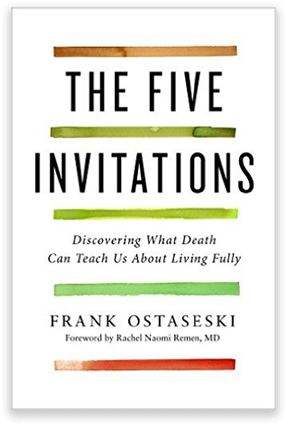Grieving the death of someone we love is like being thrown into a river raging with of powerful and conflicting emotions. It pulls us down… beneath the surface of our lives to dark waters where we cannot breathe. Frantically we try to escape the whirling of this inner journey. Surrendering, we feel ourselves being carried forward to a new destination. Emerging, we step ashore with changed eyes and re-enter a bigger world.
To be a companion to our own grief…or the grief of another it can be helpful to know something of the territory. Yet there can be a problem with models and maps that present a linear path through grief.
The danger is that we will confuse the map with the territory. So often instead of surrendering to the force of grief we prefer to know what to do and so we reach for information that will take us past it.
If we impose a map on an individual’s grief, we do them a great dis-service. We may interrupt their grieving process or harm them through our well-intentioned efforts. I want to put a warning label on this article.
- We have individual and cultural habits around managing grief. We are generally afraid and impatient. Our own unexplored fear of grief can lead us to hurrying others along the path of healing.
- Grief not only has its own schedule. Grief has a unique rhythm and texture in each of us. For many it is a deep slow process of the soul. It cannot be rushed.
- We need to allow for the spectrum of expressions of grief, from the numbness and absence of expression to the most wild and out of control displays. That sort of almost deranged expressions of grief are rarely allowed in bereavement support groups.
- Grief is an experience of the body. Sensing the body, the physical pain, the dullness, the contractions, the nausea, the myriad of sensations is a way of becoming familiar with the grief. It gives us greater access to our emotional state and this an important part of the healing.
- Grief challenges our notions of control. It cracks our defensive shell of invulnerability. It exposes the ways we hide from the truth of our human frailty.
- Grief asks us to acknowledge what has always been here but was unrecognized. Everyone we love will die. Resistance to the truth creates more suffering. Acceptance of this truth leads us toward appreciation and gratitude and making the most of our relationships.
My hope is to encourage you to step into the direct and immediate and personal experience of grief.
Everyday Grief
Most often we think of grief as the overwhelming response to a singular event, usually the death of someone we love.
When we look more closely we see that grief has been a companion through a good part of our life. Sometimes our grief is about what we have had and lost… and sometimes it’s about what we never got to have.
Our tendency for self-protection leads us to store these experiences in some dark cramped corner of our minds. But every loss triggers the memory of another. In the intense grief arising from the loss of someone we love we rediscover the pool of grief that we have always carried. The ordinary, everyday grief that inhabits our lives.
A few years ago, we were taking care of this young woman with breast cancer. Her parents lived in the mid-west. Her father worked in a meat-packing plant on the night shift. He’d worked there for 40 years. Knowing that Connie’s death was coming soon, I called him to tell him that if he wanted to be with his daughter he needed to come now.
He said, “All right, I’ll take the train. I’ll be there in a couple of days.” He’d never flown in an airplane.
I said, “You know, I think you’ve gotta come quicker than that.” And so he said he’d come by plane and he would be there that night at ten o’clock.
I went into Connie’s room and whispered in her ear, “Your dad’s coming; he’ll be here at ten o’clock.” And then she just started repeating over-and-over again, “Ten o’clock, ten o’clock, ten o’clock.”
As her father’s plane touched down at the San Francisco airport at ten o’clock, Connie died. We bathed her body, and because she was part Native American we covered it in herbs and flowers from the garden. Then it was my job to meet this father at the door to tell him that his daughter had already died. I remember that he came upstairs and just paced up and down the hallway. He couldn’t enter the room. One of us stayed with him, and one stayed with Connie, so that there was always somebody there to bear witness to his grief.
At one point, I said to him, “You know, Clyde, I’ve got to go to bed now; I’m tired.” And he said, “It’s all right, I’ll stay up with her.” And so he came into the room and sat with his daughter. When I returned in the morning, he was sitting on the edge of the bed, the phone tucked in his shoulder, eating a bagel with his other hand, making funeral arrangements for his daughter. Overnight, he had discovered a willingness to be with his grief. I asked him how that was possible. I said, “This must be so strange for you, having your daughter die before you.” He said, “You know, I realized something. It’s kind of familiar.”
What he was talking about was the everyday grief of our lives, the response to the multiple losses, to the little deaths, that occur almost daily. It’s those moments of not being recognized, the times when our expectations weren’t met. Our everyday grief arises when we remember how the carelessness of our actions has caused harm to others. It’s when we recognize how we have turned away from our own pain.
Sometimes our grief is about what we’ve had and lost, and sometimes it’s about what we never got to have.
Faces of Grief
Sadness is just one of the many faces of grief. Maybe it’s useful to understand grief as a constellation of responses, an ever-changing process. The author C.S. Lewis, after the death of his wife, wrote, “No one told me grief felt so much like fear.” Our grief manifests as anger, self-judgment, as regret or guilt. There’s loneliness and relief, blame and shame, periods of numbness when we feel like we’re walking through molasses. The sense of isolation can be beyond words.
We’re rarely prepared for the intense feelings that engulf when someone we love dies. A friend of mine who was a long-time meditator and a master gardener and a lover of nature, experienced the death of both of her parents in about a year’s time. Her father’s death was unexpected and particularly painful for her. Her grief was like this all-consuming rage. Not long after her father’s death, an environmental group invited her to speak at a rally to save the old growth redwoods. She shouted, “My father has died. There are no trees.”
Grief is unpredictable, uncontrollable. It comes in waves. You can be going along having a great day and then a memory is triggered and you find yourself overwhelmed by grief. Intense emotions hit you when you least expect them. Another friend said that it happened to her in the cereal aisle of a local supermarket. She said, “I just lost it, right there, between the Cheerios and the Raisin Bran.”
Our fear of this lack of control lead us to ideas about managing our grief or getting over our grief. It’s curious to me that we never speak about managing our joy or getting over our happiness. Grief is like a stream running through our life and it’s important to understand that it doesn’t do away. Our grief lasts a lifetime. Now our relationship to our grief changes. It won’t always have the same intensity or the same expression, but the grief itself, it remains, and the resistance to grief only intensified the pain.
There are no shortcuts through grief. The only way is right through the middle. We don’t get past the pain. We go through it and are transformed by it.




Leave a Comment